5 PrAACtical Resources For Better Communication Experiences with HealthCare Providers
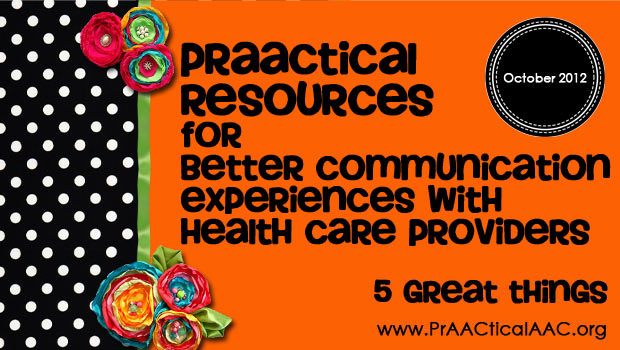
Being sick is no fun, but when you can’t communicate effectively with your healthcare provider, it can be disastrous. Here are some resources that SLPs can use to help promote effective communication and prevent adverse affects.
- Accommodations Cards: One of the simplest things we can do to help healthcare providers understand the needs of a person who uses AAC, is to give some basic information on an accommodations card. Health Bridges is a project of the Western Pennsylvania Initiative to support individuals who have hearing and vision loss. Their website includes a section that allows you to create quick accommodations cards for this population and serve as a good example for ones that you can make on your own. Accommodations cards don’t solve all the problems, but they’re a quick and easy way to make a start.
- Patient-Provider Communication Website: Amazing array of information and resources from around the world. Take some time to explore this meaty site.
- The Hospital Communication Book by The Clear Communication People is a set of pre-made materials to facilitate communication in the hospital. It is a free download that has wide applicability. Also, the VidaTak Communication Boards for Healthcare Communication: EZ Boards developed after 3 years of research and is available in 20 languages.
- Supporting People Who Will be Temporarily Unable to Speak: Article with very prAACtical information for enabling better communication by people in the ICU who are unable to speak due to intubation or for other reasons. We love the proactive approach to this in planning with the patient in advance to prepare for an alternate means of communication at that time. There is also a related PowerPoint presentation on this topic.
- On-the-Spot Tool Kit for Health Care Settings: This kit was developed for professionals who work in hospitals, nursing facilities, clinics, home health, and other medical settings. The purpose is to provide practitioners with the actual tools they can use to help patients communicate with nurses, aides, physicians, and others. It includes an adapted call bell, a Pocket Talker assisted listening device, Eye Link alphabet board, many other communication boards, a magnification sheet, and other tools that can be put into service at a moment’s notice. If you work in a healthcare setting, this is something to put into the next budget.
Filed under: PrAACtical Thinking
Tagged With: communication, communication boards, doctor, healthcare, hospital, Medical, resources
This post was written by Carole Zangari

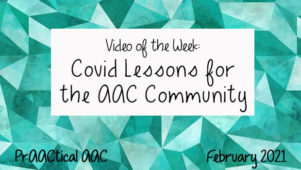
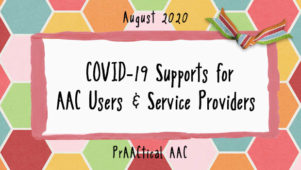
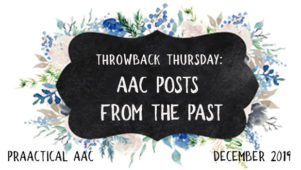
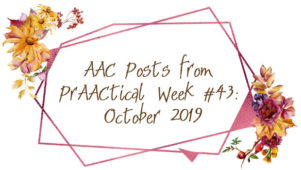
2 Comments
Hello,
Thanks for sharing some very interesting resources again. I like the simplicity of the accommodation cards and clearly they can easily be adapted further. What I would like to see on the “I am…” options is the opportunity to indicate is simply “I am uniquely verbal”.
Another option though that would be really useful is “I have sensory processing difficulties”. Having sensory processing issues creates enormous difficulties for patients in hospitals as sensory processing can really impact on the ability to cope with or indicate pain – pain typically being used as an indicator of sickness or injury yet often people with sensory processing difficulties may not demonstrate or communicate pain typically and so their symptoms or the concerns of their caregivers are misinterpreted or not taken seriously. Similarly, depending on the type of sensory processing difficulty, patients may desperately need to use arm wraps or leg wraps to assist them to calm their anxieties over hospitalisation yet we have experienced parents instead having to lay on their children for hours on end because in the hospital’s eyes to use the wraps the child needs is considered a restraint and abusive.
I think an option that should be included in the “To communicate effectively I need…” is “a familiar communication partner” – this is so important for so many people with complex communication needs, particularly those beginner communicators or those reliant on skilled auditory and/or visual scanning – especially if they also have significant motor and/or sensory difficulties which may be further compromised by their poor health or injury.
Whilst it is less quick and to the point, I think I prefer a link you shared previously on the communication passports from the NHS in the UK.
Some of the families I have worked with had the idea to put this onto an app such as pictello and include video clips of their children / young people communicating with their high tech devices or PODD books when healthy and well so show how they communicate at peak performance (as often these skills are hampered in hospital due to fatigue from sickness or physical environment) along with a description of effective interaction skills staff could use when the child/young person is sick. But either way, both links provide a great stimulus for further problem solving a very real problem – thanks so much!
I also liked the article you shared from John Costello. I heartily recommend a more recent article from the Boston Children’s Hospital – John Costello again and colleagues – “Communication vulnerable patients in the pediatric ICU: Enhancing care through augmentative and alternative communication” (2010) in Journal of Pediatric Rehabilitation Medicine: an interdisciplinary approach. The themes are similar but with more up to date and detailed descriptions of the use of technology and lots of pictures / photos too. It supports and extends the earlier article.
Laura, thanks for your comments and the ideas for further resources. I love the concept of using Pictello for something like this. I heard someone recently talk about the need for medical personnel to view communication as a vital sign, something that should have such importance that we monitor it all the time. He said something like this: We will have succeeded in our advocacy effort when a nurse or other healthcare provider enters the room of someone who cannot communicate and feels a sense of urgency to get that resolved, just as if that person’ blood pressure had fallen or they were running a fever. We have a long way to go. Thanks, again, for your thoughtful comments.